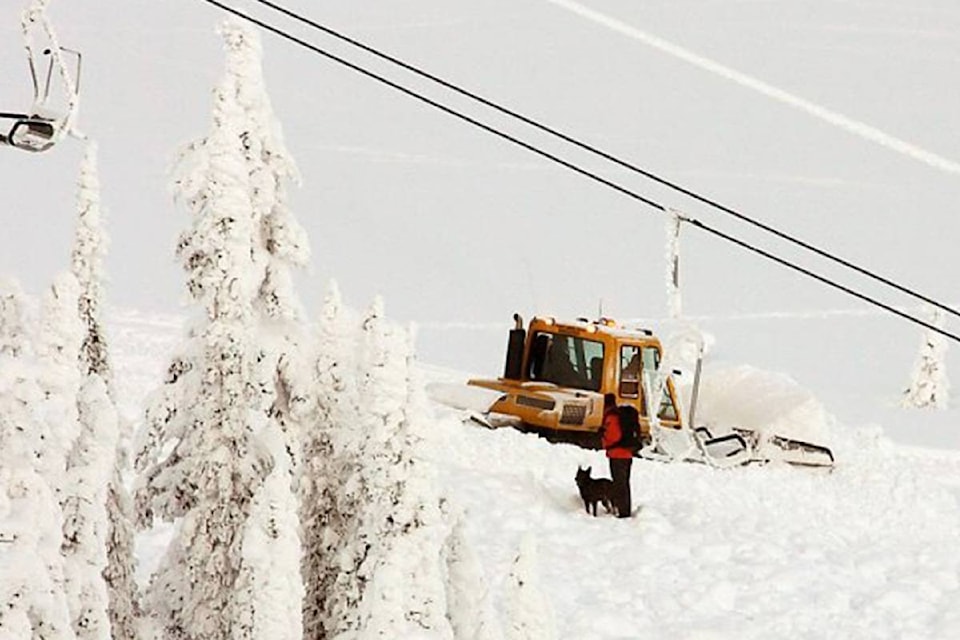By Tim Petruk, Kamloops This Week
In 2008, Leigh Barnier, an employee of Big White ski resort in Kelowna, died when an avalanche swept three people from the resort’s Parachute Bowl, a double black diamond run. While avalanches on ski resort runs are extremely rare, avalanches in the backcountry are common. Sean Connor/Capital News
The head of Kamloops Search and Rescue is warning those looking to play in the backcountry this weekend to stay home.
Alan Hobler’s warning on Friday came a day after Avalanche Canada released an urgent bulletin warning of dangerous conditions across most of the Southern Interior, including a big chunk of the Kamloops area.
“Don’t even go,” Hobler, KSAR’s manager, told KTW. “Schedule your winter so you’re flexible enough that your plans can change based on conditions like this. Go out when the conditions are better.”
Hobler said search and rescue crews are often called out to help people who entered avalanche terrain unknowingly.
“What we do see very regularly in searches are people going into avalanche terrain absolutely oblivious to it,” he said. “There is a lot of avalanche terrain around, too, and it can change based on snow conditions.”
The Avalanche Canada warning said a number of weak layers in the snowpack, along with recent snowfall, have created very dangerous conditions in the region’s mountains.
“We have been keeping a close eye on these weak layers and the snow load that has been accumulating on top of them,” said James Floyer, forecasting program manager with Avalanche Canada.
“It’s a complex situation and we are now at the tipping point. The warmer temperatures forecast for the coming weekend will definitely increase the chances of triggering an avalanche.”
The bulletin came on the heels of a fatal avalanche near Fernie on Monday, in which an Alberta man was killed.
“Many of these incidents are occurring in what is generally considered fairly safe terrain, such as relatively low-angle slopes, treed areas and even heavily tracked slopes,” Floyer said.
“These conditions require expert-level decision-making skills and we recommend backcountry users avoid avalanche terrain.”
